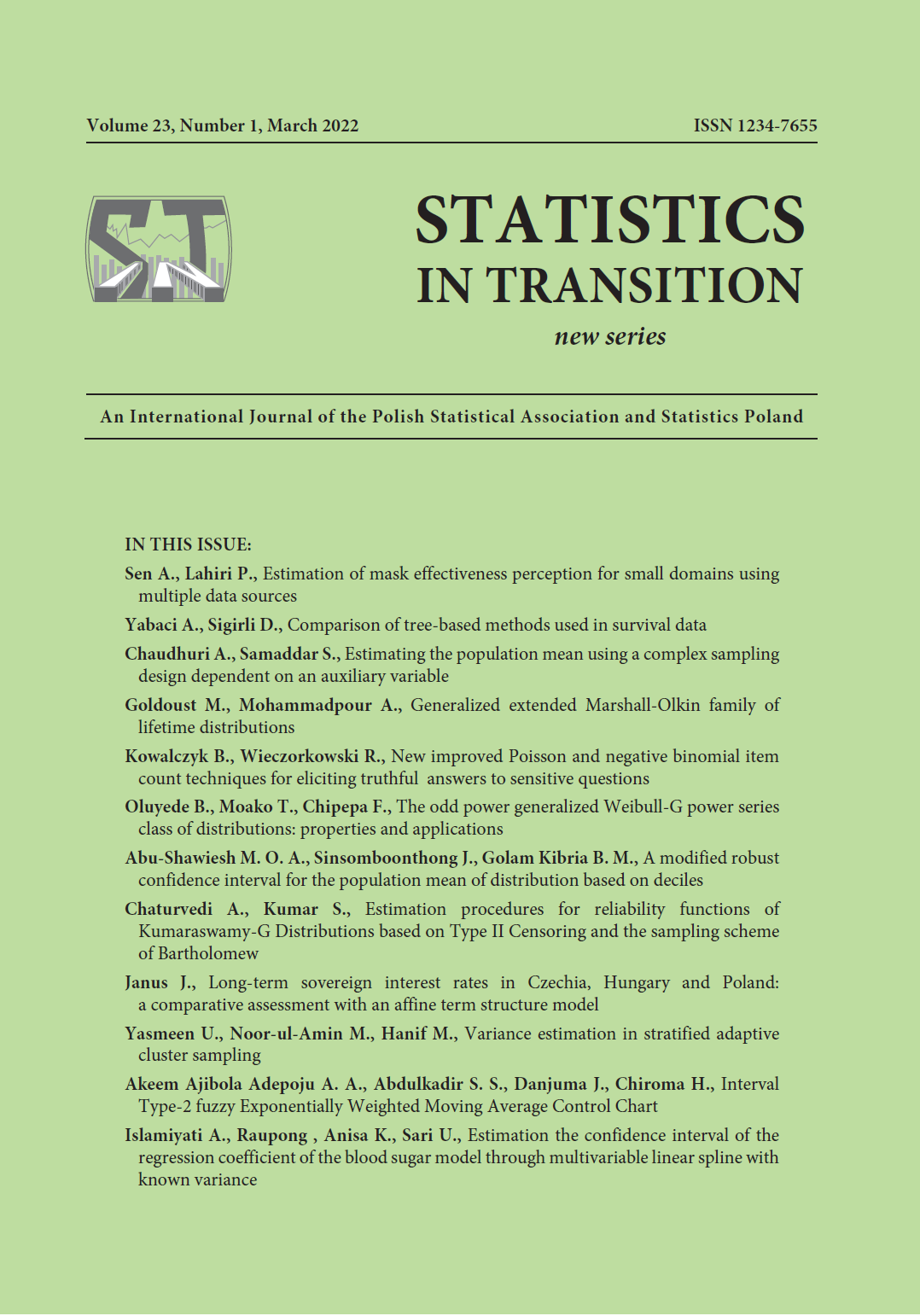ARTICLE
ABSTRACT
Understanding the impacts of pandemics on public health and related societal issues at granular levels is of great interest. COVID-19 is affecting everyone in the globe and mask wearing is one of the few precautions against it. To quantify people’s perception of mask effectiveness and to prevent the spread of COVID-19 for small areas, we use Understanding America Study’s (UAS) survey data on COVID-19 as our primary data source. Our data analysis shows that direct survey-weighted estimates for small areas could be highly unreliable. In this paper, we develop a synthetic estimation method to estimate proportions of perceived mask effectiveness for small areas using a logistic model that combines information from multiple data sources. We select our working model using an extensive data analysis facilitated by a new variable selection criterion for survey data and benchmarking ratios. We suggest a jackknife method to estimate the variance of our estimator. From our data analysis, it is evident that our proposed synthetic method outperforms the direct survey-weighted estimator with respect to commonly used evaluation measures.
KEYWORDS
cross-validation, jackknife, survey data, synthetic estimation
REFERENCES
Angrisani, M., A. Kapteyn, E. Meijer, and H.-W. Saw, (2019). Sampling and weighting the Understanding America Study, Working Paper, No. 2019-004, Los Angeles, CA: University of Southern California, Center for Economic and Social Research.
Census Bureau, (2010). Census Regions and Divisions of the United States.
Ghosh, M., (2020). Small area estimation: Its evolution in five decades. Statistics in Transition New Series, Special Issue on Statistical Data Integration, pp. 1–22.
Hansen, M., W. Hurwitz, and W. Madow, (1953). Sample Survey Methods and Theory, Vol. 1. Wiley-Interscience.
Lahiri, P. and S. Pramanik, (2019). Estimation of average design-based mean squared error of synthetic small area estimators, Austrian Journal of Statistics, 48, pp. 43–57.
Lumley, T., (2004). Analysis of complex survey samples, Journal of Statistical Software, 9(1), pp. 1–19, R package verson 2.2.
Lumley, T., (2010). Complex Surveys: A Guide to Analysis Using R: A Guide to Analysis Using R. John Wiley and Sons.
Lumley, T., (2020). Survey: analysis of complex survey samples, R package version 4.0.
Marker, D., (1995). Small Area Estimation: A Bayesian Perspective. Phd thesis, University of Michigan, Ann Arbor, MI.
Marker, D., (1999). Organization of small area estimators using a generalized linear regression framework, Journal of Offcial Statistics, 15, pp. 1–24.
Rao, J. N. K., I. Molina, (2015). Small Area Estimation, 2nd Edition, Wiley.
Stasny, E., P. Goel, and D. Rumsey, (1991). County estimates of wheat production, Survey Methodology, 17 (2), pp. 211–225.
U.S. Census Bureau, (2020). Census Bureau Population Estimates. Wikipedia, (2020). Political party strength in U.S. states.
